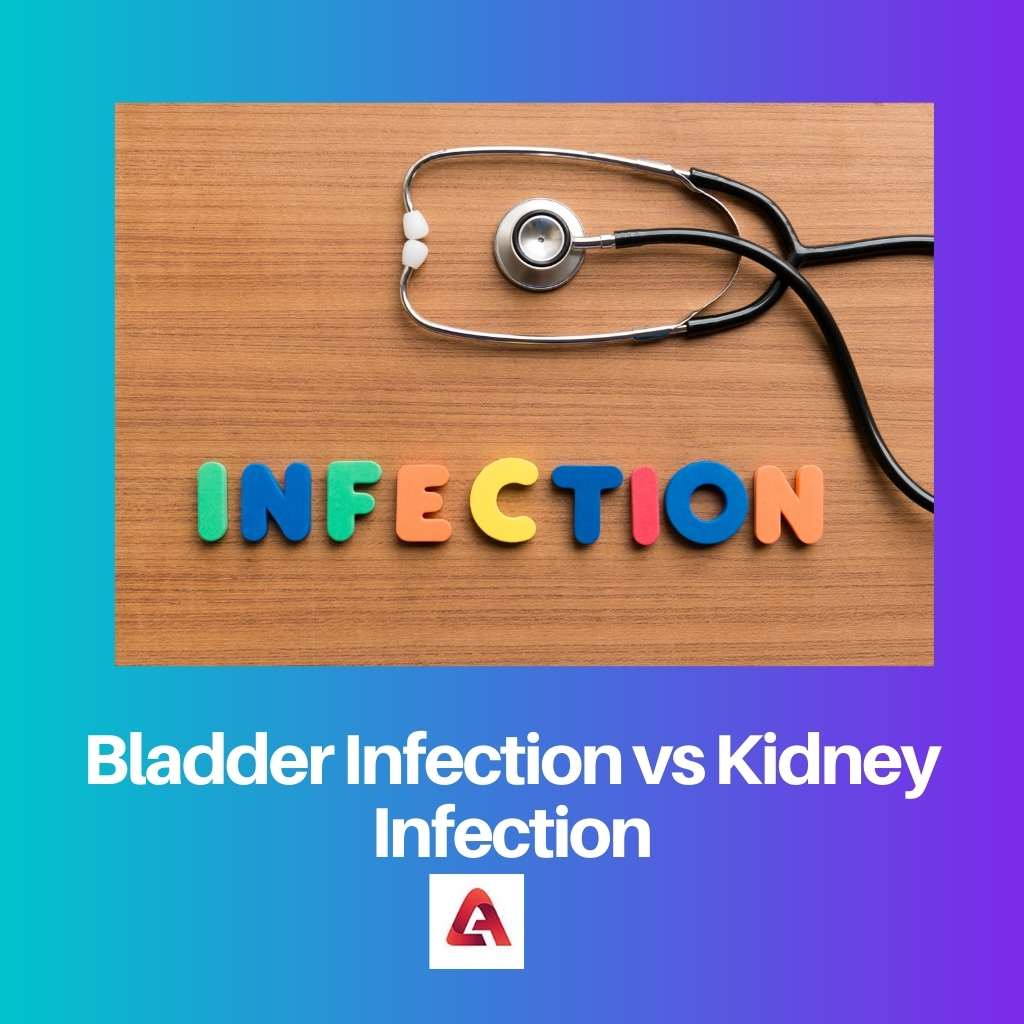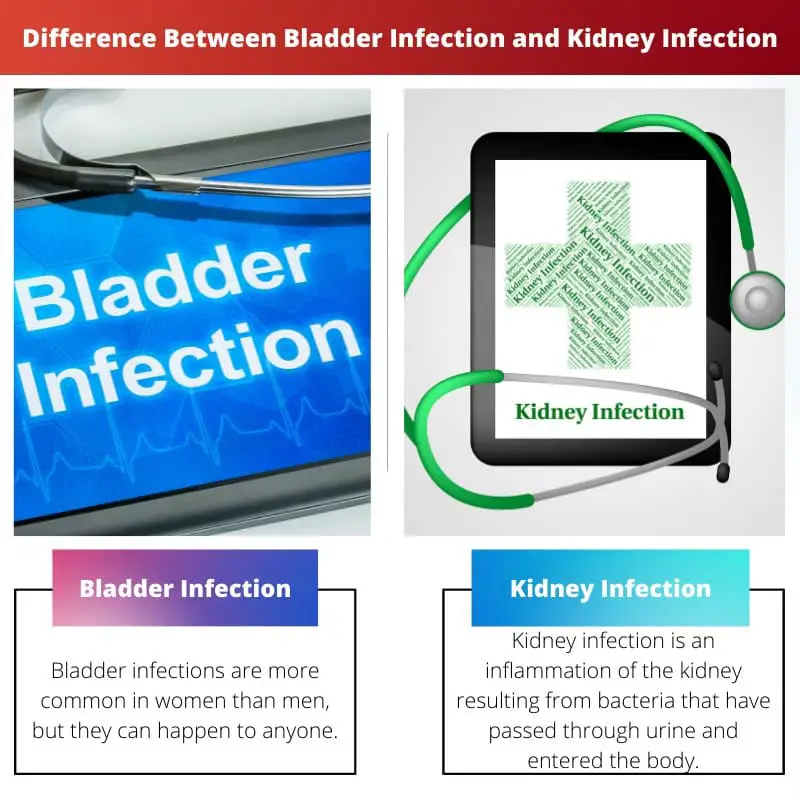When you think of infections, you probably don’t think of your bladder or kidney. But these two organs can get infected, and it’s important to know the common symptoms to seek help.
When your kidneys are affected, you may have a fever, extreme fatigue, and nausea. Your urine will be dark yellow, and you may feel slightly nauseous.
In urinary tract infections such as urethritis or cystitis, the condition may travel to the bladder and the kidneys if untreated.
Kidney infections are caused by bacteria that enter through the urethra and into the urinary tract system, where they multiply rapidly.
To prevent this from happening, one should stay hydrated, urinate and never wipe from front to back after urinating (this spreads bacteria around) to avoid spreading bacteria all around your body.
Infections in your bladder tend to cause pain when passing urine or difficulty in peeing altogether, which is accompanied by.
Key Takeaways
- Bladder infections, or cystitis, occur in the lower urinary tract, while kidney infections, or pyelonephritis, affect the upper urinary tract.
- Kidney infections are more severe than bladder infections and may require hospitalization.
- Prompt treatment of bladder infections can help prevent the progression of a kidney infection.
Bladder Infection vs Kidney Infection
The difference between Bladder Infection and Kidney Infection is that Bladder infections are a type of infection that occurs when bacteria from the environment enter the bladder. These bacteria can cause inflammation and pain in the bladder. Kidney infections, on the other hand, are a type of infection that occurs when a problem with the kidneys is caused. This problem can be caused by something as simple as a virus or an injury.

Bladder infections are more common in women than men but can happen to anyone. A bladder infection is caused by the bacteria candida, found in your bladder. It’s caused by too much salt, alcohol, or a urinary tract infection.
Symptoms can include burning with urination and pain when going to the bathroom.
Kidney infection is an kidney inflammation resulting from bacteria that have passed through urine and entered the body.
The most common cause of kidney infections is Escherichia coli, commonly found in faecal material but can also come from other sources like soil or water.
Comparison Table
| Parameters of Comparison | Bladder Infection | Kidney Infection |
|---|---|---|
| Bacteria Involved | Candida | Escherichia coli |
| Affects | Inflammation of the bladder | Inflammation of the kidney |
| Cause | Weakened immune system | High fever |
| Symptoms | Frequent urination, a constant urge to urinate, and pain during urination | Nausea, fever, vomiting |
| Average Duration | Eight days | Two weeks |
What is Bladder Infection?
A bladder infection is a common symptom of various conditions, such as urinary tract infections and reactive urinary tract stones. It is also linked to radiation therapy for cancer treatment, stress incontinence, diabetes mellitus, and pregnancy.
In rare cases, it is caused by an autoimmune disease called enterovirus B19 infection, where the virus infects the cells in your bladder lining.
Bacteria most cause bladder infections. Some common antibiotics used to treat bladder infections include ciprofloxacin, amoxicillin/clavulanate potassium, ertapenem, and nitrofurantoin.
The signs and symptoms of a bladder infection may vary depending on the cause.
It is recognized that one common symptom is urinary frequency which can make it hard to go to the bathroom frequently enough to keep up with your body’s need for fluid intake.
A bladder infection occurs when the bladder lining is irritated and causes what’s known as cystitis. With cystitis, you will notice persistent urination with burning during urination and pain in the abdomen and lower back.
What is Kidney infection?
A kidney infection is caused by an irritation of the kidney, which causes what’s known as pyelonephritis. The pyelonephritis bacteria can pass from person to person through urine which could lead to severe complications if left untreated.
Kidney infections also occur when there is a blockage in the urinary tract due to a stone or tumour. It’s common for this to happen in pregnant women or have recently delivered.
The symptoms of a kidney infection are quite different from those of a bladder infection and include fever, chills, abdominal pain, and blood in the urine.
Bacteria or viruses can cause kidney infections. Antibiotics proven to work for kidney infections include ampicillin, trimethoprim/sulfamethoxazole, and aztreonam.
Symptoms of a kidney infection include nausea and vomiting. Other symptoms may include increased thirst or urination and decreased appetite or weight loss.
Main Differences Between Bladder Infection and Kidney Infection
- Various bacteria cause a bladder infection, while pyelonephritis bacteria cause a kidney infection.
- A bladder infection is considered a minor problem and can be fixed with over-the-counter medications and home remedies, while a kidney infection can lead to serious complications if left untreated.
- A bladder infection is not painful, but if it becomes severe, then pain and burning sensations are possible. Kidney infections tend to be much more painful than bladder infections.
- Bladder infections are not contagious as long as you have no symptoms of an active infection, but kidney infections are contagious when the individual has symptoms of an active or recent infection.
- The symptoms for both types of infections can vary from person to person, so there is no way to know which type you have without seeing your doctor.

- https://www.tandfonline.com/doi/abs/10.3109/02841868909092283
- https://onlinelibrary.wiley.com/doi/abs/10.1111/j.1365-2958.2008.06509.x

This article offers a comprehensive understanding of the causes, symptoms, and treatments for bladder and kidney infections.
It’s critical to have accurate information about these infections, and this article delivers just that.
The article provides detailed information about both bladder and kidney infections, helping to increase awareness about these important medical conditions.
Great article. It’s so important to know the details and differences between bladder and kidney infections. This is a helpful resource for those seeking to understand these conditions.
This is very informative, a good source for understanding the symptoms and differences between bladder and kidney infections.
This highlights the severity of kidney infections and the need to seek prompt treatment. Additionally, the preventative measures to avoid the spread of bacteria are useful.